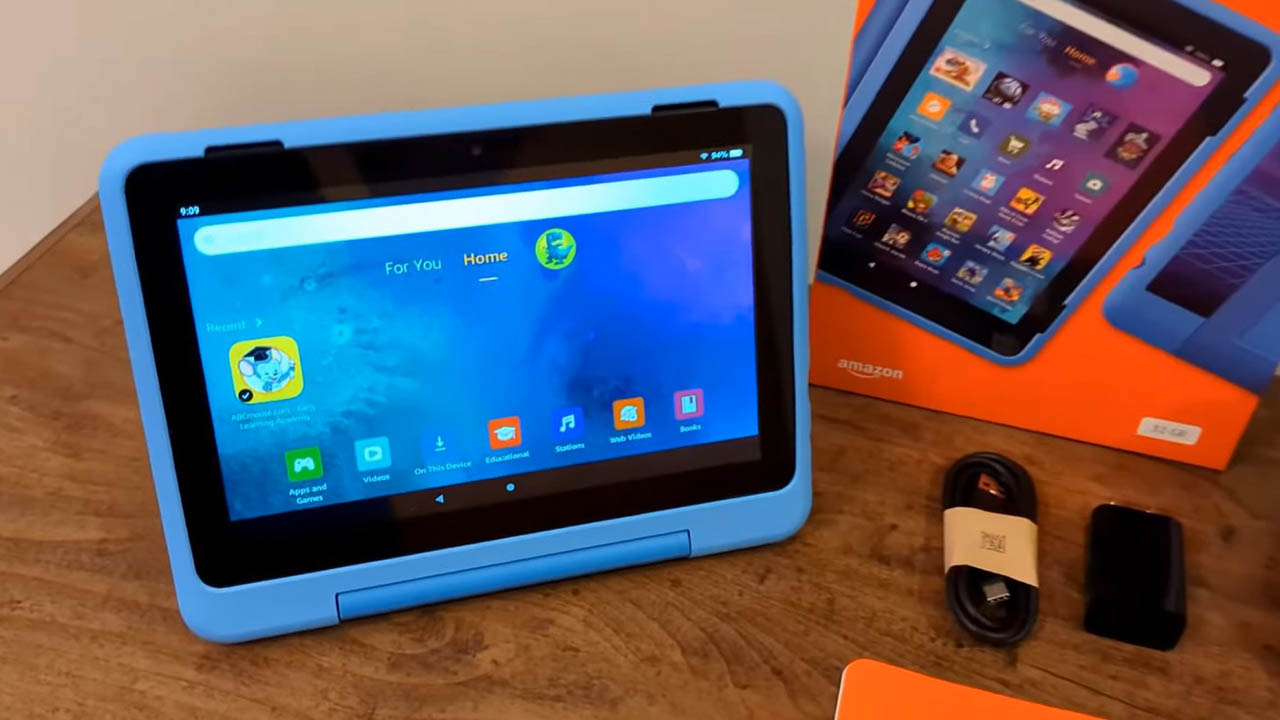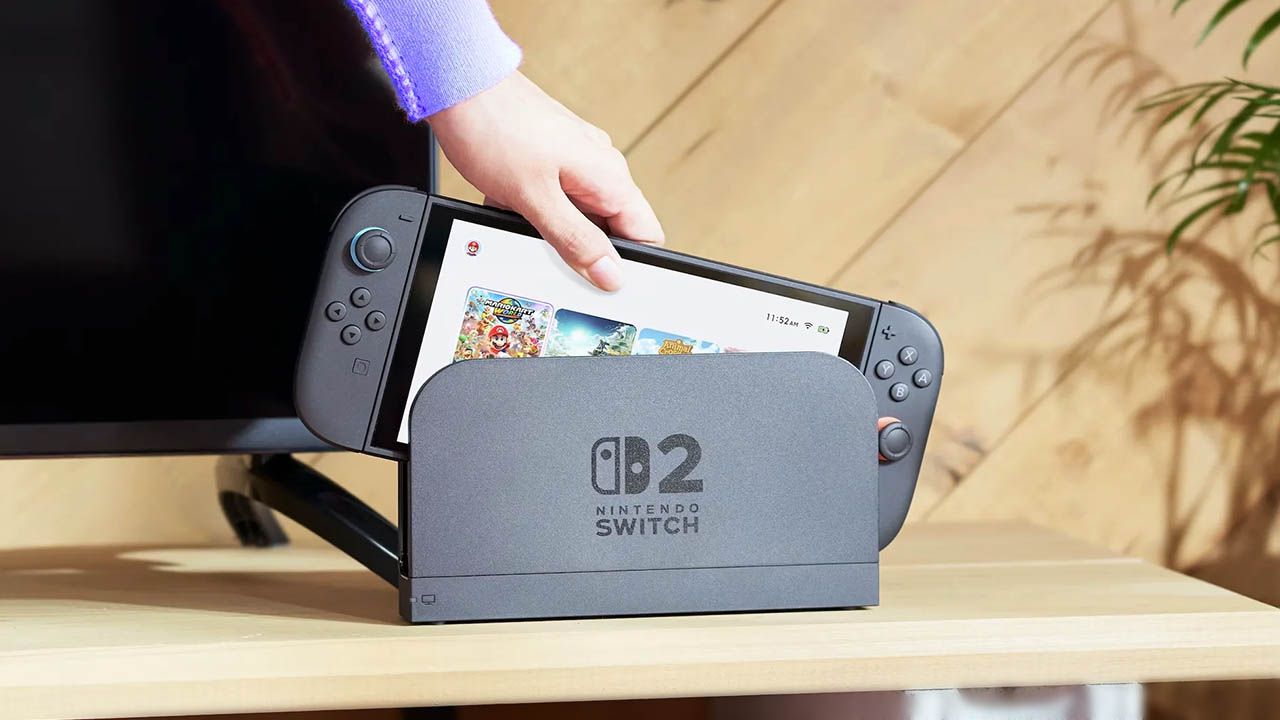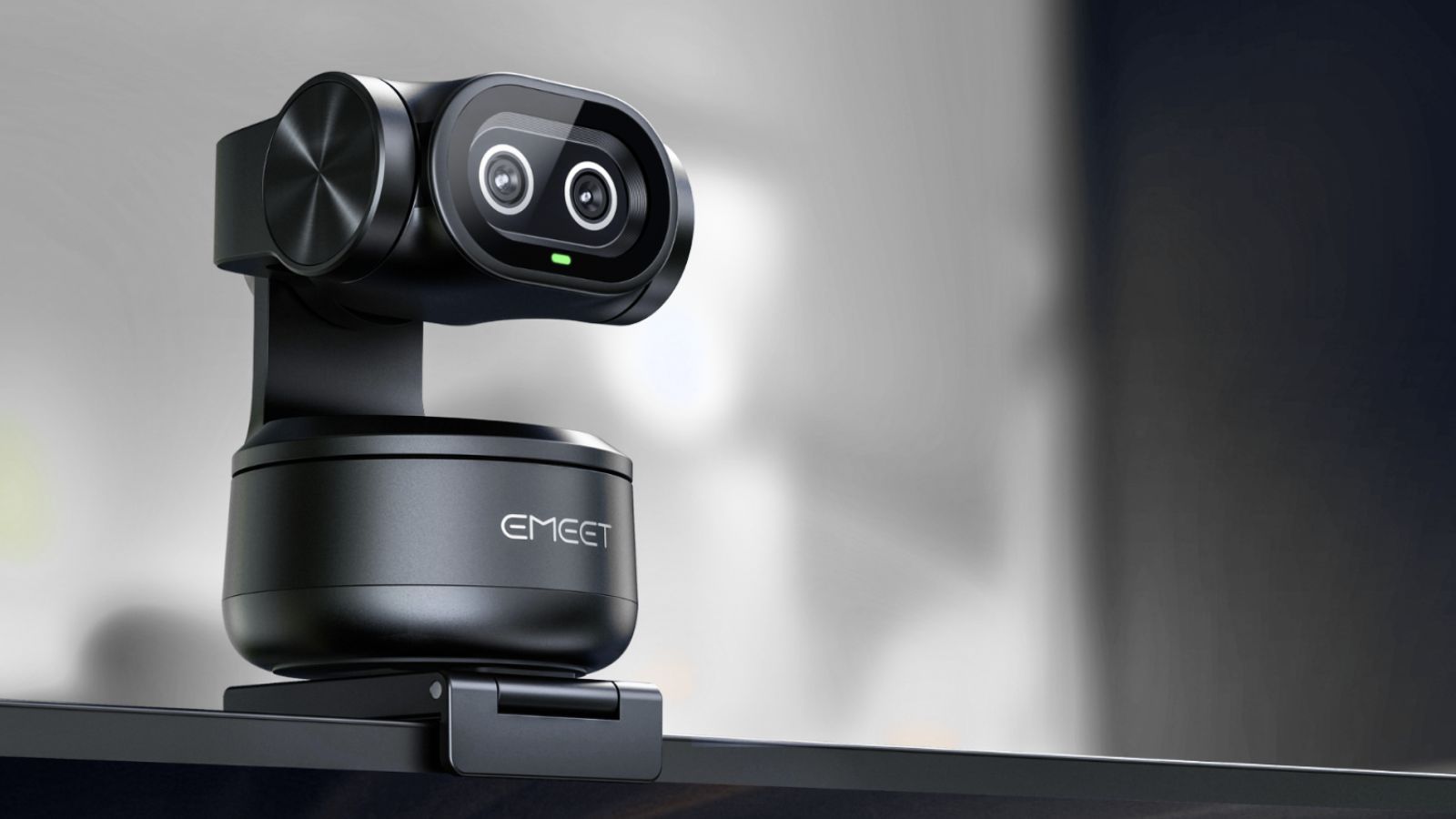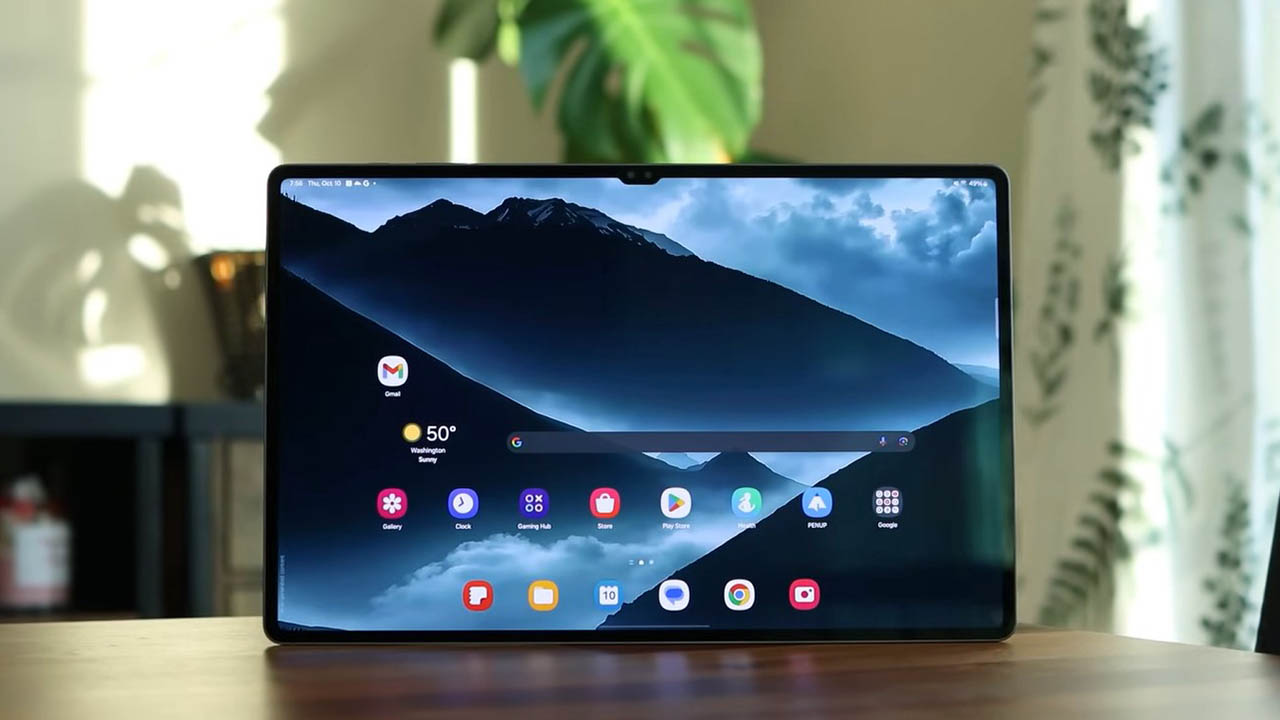PS5 Review – Is it worth it?
The PS5 had some massive expectations to live up to following the roaring success of the PS4, but Sony’s current-gen console has certainly gone above and beyond, setting a new standard in gaming. There’s a lot to discuss when highlighting what makes this console so remarkable, from the hardware itself to everything it brings along.
First up, the DualSense controller is nothing short of revolutionary, with its haptic feedback and adaptive triggers. This tech feels incredibly immersive and is practically a selling point on its own. Sony even released an upgraded version called the DualSense Edge, which, while impressive, is not for everyone due to its steep price tag.
The PS5’s fresh user interface, lightning-fast SSD load times, 3D audio capabilities, and powerhouse internals mark a massive leap forward from the PS4. The console just feels like a huge step up, and once you start gaming on it, it’s genuinely hard to go back.
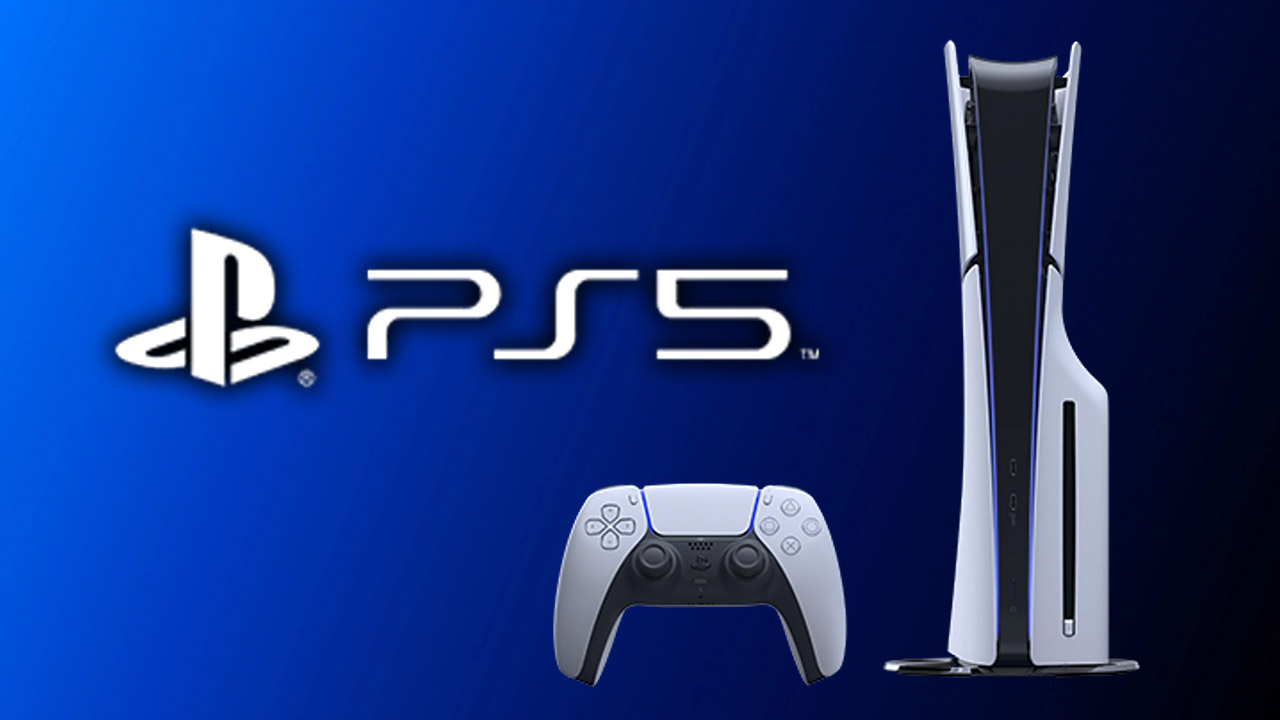
TODAY’S BEST DEALS $499 at Amazon
However, it’s hard to ignore the console’s divisive look. With its wing-like faceplates and bulk, the PS5 is an eyesore for some, though the new PS5 Slim has toned down the size. The upside to the original’s bulk, however, is that it’s whisper-quiet and runs cool. You can position it vertically or horizontally, though the need for a stand is a bit of an inconvenience when it’s on its side. Thankfully, since launch, we haven’t seen major hardware issues like crashes or storage corruption.
One area where the PS5 stumbled early was with 120Hz support for HDMI 2.1 TVs, but it’s gradually catching up. The list of 120fps games is expanding, with big titles like Horizon Forbidden West, Fortnite, and Ghostwire Tokyo supporting it. Additionally, the PS5 now supports VRR (variable refresh rate), keeping gameplay smooth and screen tear-free on compatible TVs. It’s a fantastic feature, and we’re glad Sony introduced it.
But you don’t need a premium TV to appreciate the PS5’s incredible power. With super-quick load times, sharper visuals, and smoother gameplay, the console brings even older titles to life with an enhanced level of detail and performance.
Sony has also re-imagined the user experience, making setup simpler and the interface more intuitive, with nice extras for PS Plus members. Essential members get a curated set of games right off the bat, and Extra and Premium users can access even more in the Game and Classics Catalogs. Plus, backward compatibility ensures that your favorite PS4 games work on the PS5 from day one.
All in all, the PS5 is a seriously impressive console with an ever-growing line-up of exclusives. It would have been great to see more first-party games at launch, but what’s available has expanded nicely. The one wish is for more backward compatibility support for titles from the PS2 and PS3 eras, though the PS5 still feels like a worthwhile investment for now and the future.
The exclusive games library has grown well since launch. Returnal fully utilizes the PS5’s hardware, while Horizon Forbidden West and Gran Turismo 7 are visually stunning, and Ratchet and Clank: Rift Apart is an absolute spectacle that showcases what next-gen gaming can look like.
The PS5 bridges the gap between the old and new console generations, appealing to PS4 owners who don’t want to lose their existing game library. With significant upgrades like the ultra-fast NVMe SSD and a powerful GPU capable of ray tracing and high frame rates, alongside smaller touches like a built-in microphone in the controller for quick chatting, it’s clear that the PS5 was built with both ease of use and high performance in mind.
The PS5 Digital Edition offers the same experience without the 4K Blu-Ray drive, coming in at a more affordable $399 / £389.99 / AU$649.95. With a sleeker, symmetrical design, it’s a great option if you don’t need physical discs. We’ve compared the two PS5 models in detail to help you decide which fits your needs best.
No matter which version you go with, the PS5 is an easy recommendation as an upgrade over the PS4 and an enticing gateway to the next era of gaming.
PS5 Review: Specs
| Feature | PS5 Slim (Standard) | PS5 Slim (Digital Edition) |
|---|---|---|
| Price | $499 | $449 |
| Processor | Custom AMD Zen 2, 8-core / 16 threads, 3.5GHz | Custom AMD Zen 2, 8-core / 16 threads, 3.5GHz |
| GPU | AMD RDNA 2, 10.3 teraflops, 2.23 GHz | AMD RDNA 2, 10.3 teraflops, 2.23 GHz |
| RAM | GDDR6 16GB | GDDR6 16GB |
| Storage | 1TB SSD | 1TB SSD |
| Disc Drive | 4K Blu-ray, up to 100GB/disc | Optional add-on |
| Video Output | 4K, 120Hz | 4K, 120Hz |
| Ports | 2 x USB Type C (front), 2 x USB-A, 1 x Ethernet, 1 x HDMI (rear) | 2 x USB Type C (front), 2 x USB-A, 1 x Ethernet, 1 x HDMI (rear) |
| Networking | Gigabit Ethernet, Wi-Fi 6 | Gigabit Ethernet, Wi-Fi 6 |
TODAY’S BEST DEALS $499 at Amazon
PS5 Review: Price and Release Date
The PS5 officially launched on November 12, 2020, in North America, Australia, Japan, South Korea, and New Zealand, with a wider release across the rest of the world a week later on November 19. Just two days after the debut of Microsoft’s Xbox Series X and Series S, Sony’s new-gen console hit the market, drawing immediate attention and anticipation. From its price to its performance, it marked a substantial step up from the PS4, yet it wasn’t exactly cheap.
At launch, the PS5 was priced at $499.99 / £449.99 / AU$749.95 for the standard edition, which includes a 4K Blu-ray drive. The PS5 Digital Edition, identical in specs but lacking a disc drive, debuted at a slightly more affordable $399.99 / £359.99 / AU$599.95. That $100 savings could be enticing if you’re all-in on digital games, though for some, the physical drive’s versatility is worth the extra cost.
Compared to its predecessors, the PS5’s price represents a jump. The PS4, PS4 Slim, and even the PS4 Pro all launched at $399.99. But for an additional $100, you’re getting a true generational leap in hardware, with features like faster load times, ray tracing, and incredible visual fidelity. While it’s no doubt pricier, the increase feels warranted considering what the PS5 delivers.
Still, Sony did announce a price hike for the PS5 in several markets due to global inflation, sparing only the US from the increase. Now, the standard PS5 costs £479.99 / €549.99 / AU$799.95, while the Digital Edition goes for £389.99 / €449.99 / AU$649.95. It’s a steep rise, but given the demand and rising production costs, it’s not entirely unexpected.
Of course, the PS5 isn’t the only console vying for your attention. Microsoft’s Xbox Series X and Series S launched alongside Sony’s flagship, offering strong competition. The Series X is priced similarly to the PS5 at $499 / £479 / AU$749, while the Series S is significantly cheaper at $299 / £249 / AU$499. This makes Sony’s consoles more expensive overall, but the PS5 holds its own in terms of performance and exclusive titles, which may justify the price for many.
The PS5’s higher cost hasn’t dulled its appeal. In fact, it continues to be one of the most sought-after gaming systems, thanks to its impressive specs and immersive features like the DualSense controller and 3D audio. If you’re interested in a deeper comparison between Sony’s PS5 and Microsoft’s Series X, check out our detailed PS5 vs. Xbox Series X breakdown for more insights.
PS5 Review: Design
The PS5 is a behemoth among modern gaming consoles, with its impressive size adding both functionality and divisiveness. Measuring roughly 39 x 10.4 x 26 cm (H x W x D), though tricky to measure exactly due to its curved design, it’s the largest console Sony has ever released. Weighing in at 4.5 kg, it feels hefty, making its presence known as soon as you lift it. This size provides room for efficient air ventilation and a larger fan, but it also demands more space in your setup. Some users may need to rethink their entertainment layouts to fit this towering device under the TV.
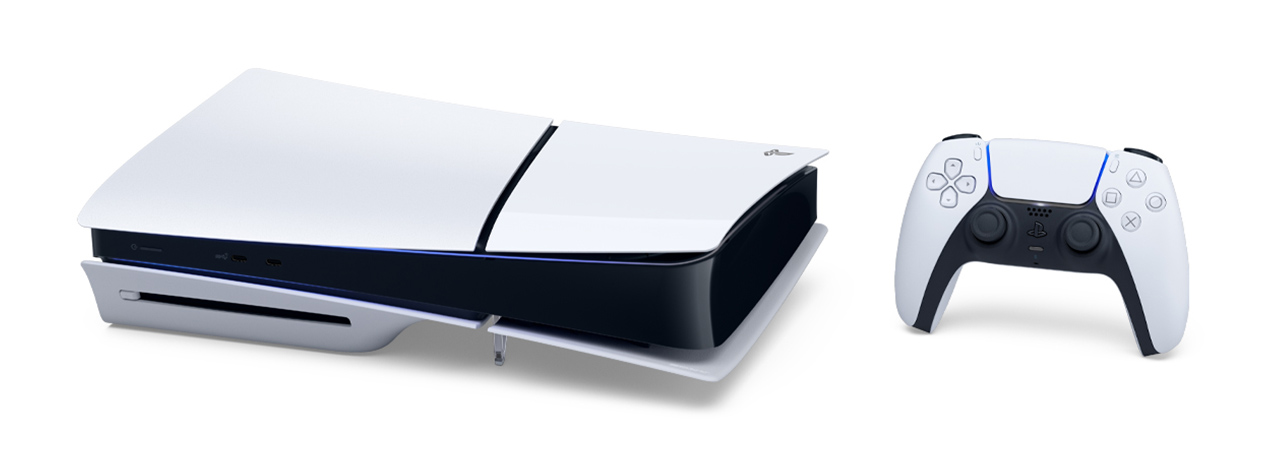
Opinions vary widely on the PS5’s design. Its two-tone color scheme and distinctive, futuristic shape attract attention, though not all find it appealing. Fortunately, Sony now offers alternative console covers in different colors, letting users customize the PS5’s look to better match their aesthetic preferences. One element nearly everyone appreciates, however, is the subtle lighting effect along the console’s edges, which shifts from orange in rest mode to a soft blue-to-white glow when active. It’s a gentle nod to the PS4’s design, lending the console a futuristic vibe.
Despite its sleek aesthetic, some design choices feel less practical. Sony’s decision to place a glossy plastic strip along the console’s center spine, where the front USB ports reside, has drawn criticism. Over time, this area can accumulate scratches, dust, and fingerprints, even with careful use. While the PS5 is relatively easy to clean, this glossy finish makes upkeep a frequent task.
Setting up the PS5 isn’t as simple as just placing it down and plugging it in. Due to its height and curving structure, the console requires an attachable stand for both horizontal and vertical orientations. The stand is functional but feels slightly cheap, holding a small screw for vertical positioning that’s easy to misplace. It attaches with a clamp when the console is horizontal, though it occasionally slipped off when we adjusted the PS5’s position. While the stand does its job, the setup process could have been more intuitive.
The PS5 includes a range of ports for easy connectivity. On the front, you’ll find both a USB-A and USB-C port, while the back has two USB-A ports, an HDMI 2.1 port, an Ethernet port, and a power port. The lack of proprietary ports is a welcome detail, simplifying cable replacements if necessary.
PS5 Review: Performance
The PS5 is a powerhouse of a console, capable of delivering 4K gameplay at a smooth 120 frames per second and even supporting 8K/60fps under specific conditions. This feat is made possible by its custom RDNA 2 GPU and octa-core AMD Zen 2 CPU clocked at 3.5GHz, along with 16GB of GDDR6 memory and a blazing-fast 825GB NVMe SSD. While 8K isn’t quite ready for prime time yet (requiring a future firmware update from Sony), the console is already a marvel of modern gaming hardware.

One noticeable limitation, however, is storage space. With an 825GB SSD (and only 667.2GB of that actually usable), you might find yourself needing to manage game installations more actively, especially with the growing size of modern games. During our testing, that usable space supported around 16 games, including two PS5 titles—Astro’s Playroom and Marvel’s Spider-Man: Miles Morales—and a handful of PS4 titles like God of War and Detroit: Beyond Human. While it’s enough for most, heavy gamers may feel the pinch.
Sony addressed this storage challenge by eventually allowing users to upgrade the internal SSD. After an update, you can open up the PS5, reveal the SSD bay, and install a compatible M.2 SSD with just a screwdriver. Though it’s a bit more hands-on than some might like, the process is straightforward, and it’s nice to add space without losing the built-in 667GB.
External storage is another option, particularly for PS4 games and PS5 game storage. Using an external SSD or hard drive is easy; plug it into a USB port, and the console recognizes and formats it for game storage. Note that while PS4 games can be played directly from external storage, PS5 games must be transferred back to the internal SSD to be playable. The external drive also won’t reach the same high-speed load times as the PS5’s built-in SSD, but you’ll still get better speeds than from a standard hard drive.
Load times on the PS5 are game-changing, especially compared to the PS4. Marvel’s Spider-Man Remastered, for instance, loads in less than a second, while Demon’s Souls and Returnal are nearly load-free experiences. With these rapid load times, you’re pulled into gameplay nearly instantly, an impressive leap forward that makes waiting for levels to load feel like a thing of the past.
Beyond speed, the graphics on PS5 are the next big leap. Astro’s Playroom shows off the console’s capabilities, running at a steady 60 frames per second in full 4K, with smooth performance that makes the visuals pop. Many games now offer a Performance Mode that prioritizes high frame rates, often 60fps, at 4K resolution, or you can choose a 30fps mode for more graphical detail. Most launch games support 4K resolution at 30fps or 60fps by default, a significant upgrade from the PS4’s usual 1080p/30fps cap.
Looking to the future, more titles should eventually support 4K/120fps gameplay, and even 8K at lower frame rates for graphically simpler games. Early titles with 120fps modes included Call of Duty: Black Ops Cold War, Devil May Cry V: Special Edition, Dirt 5, Rainbow Six Siege, and WRC 9. However, achieving 120fps requires a HDMI 2.1-compliant TV, which supports the necessary refresh rates at higher resolutions. If you’re looking to play at 120fps, make sure your setup is fully compatible.
Since launch, we haven’t seen as many 120fps-enabled games as initially anticipated, although the list is growing steadily. Xbox Series X|S consoles offer more titles with 120fps options, but the PS5 still shines with its Performance Mode options. Most games will continue to deliver 4K/60fps or 4K/30fps visuals, depending on your preference for frame rate or graphical fidelity. Performance Mode generally sacrifices some resolution and effects to reach a higher frame rate, while Resolution Mode keeps visuals at their sharpest with effects like ray tracing and higher shadow quality.
Ray tracing in particular is a notable addition on PS5, lending realistic lighting and reflections to games like Marvel’s Spider-Man: Miles Morales. With it, you can see lifelike reflections on windows, shimmering effects on particles, and realistic lighting that elevates the gaming experience. The visual leap from PS4 to PS5 is impressive, with games looking and feeling more immersive thanks to these added details.
Higher frame rates bring a noticeable improvement in responsiveness, especially in fast-paced genres like first-person shooters. With smoother action, games feel quicker and more precise, something that’s been challenging for consoles to deliver before the PS5. It’s a testament to the power of Sony’s hardware, even if achieving such frame rates requires a bit of a trade-off in graphics quality in some modes.
With faster load times, graphical improvements, and more flexibility, the PS5 is a remarkable console that brings new excitement to gaming.
PS5 Review: DualSense Controller
The new DualSense Controller feels like a revolution over the DualShock 4, with standout features like adaptive triggers and haptic feedback. Additionally, the mute button can mute your mic or, if your TV has HDMI CEC, even mute the TV itself.
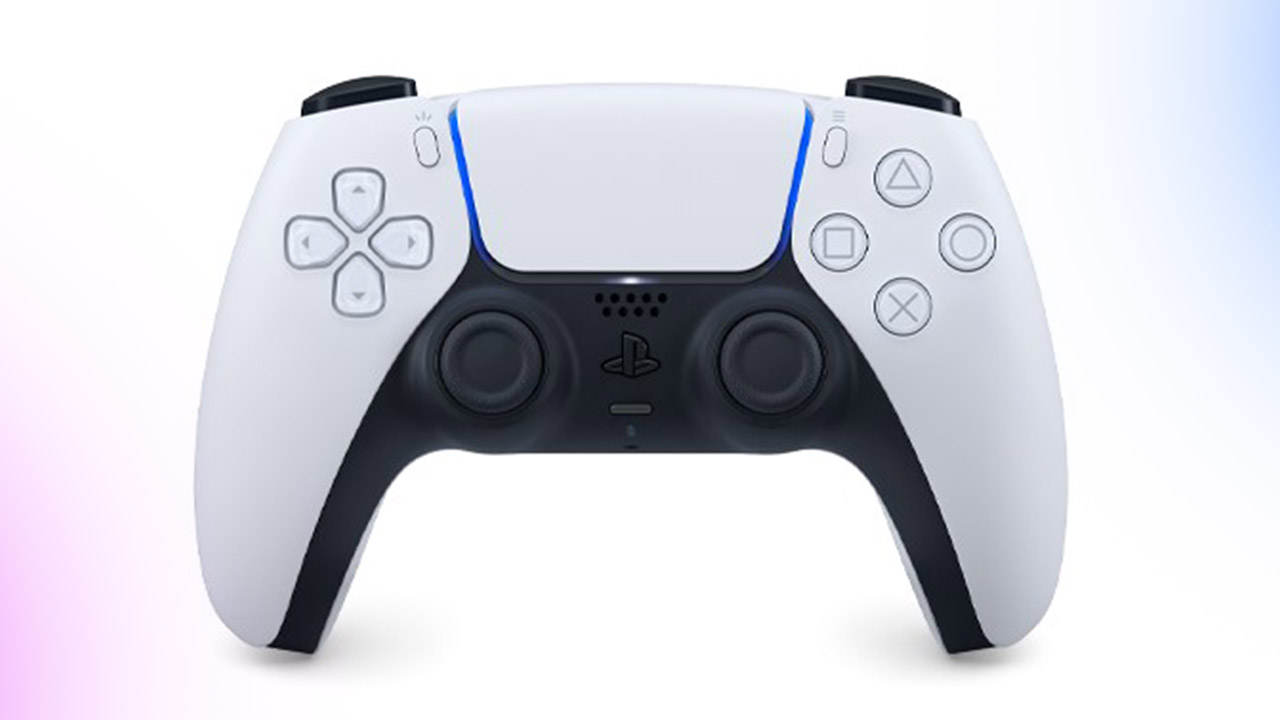
TODAY’S BEST DEALS $74.49 at Amazon
Navigating this brave new world of console gaming requires the latest gamepad — the DualSense controller. Luckily, a DualSense controller comes included with the PS5. Holding it for the first time feels oddly familiar if you’ve used a DualShock 4, but it’s somehow better. The ergonomic design is excellent for long gaming sessions, and going back to the DualShock 4 afterward feels surprisingly awkward.
Right away, you’ll notice the DualSense has a satisfying heft. Most of the weight sits comfortably in the grips, which feature a textured underside that provides extra hold and helps prevent slips. Look closer, and you’ll see the texture is actually tiny PlayStation face buttons, a subtle but clever detail. The two-tone design extends to the face buttons, which now appear in a muted, minimalist style, similar to the PS Vita’s approach. The once-bright Lightbar has also moved from the top to around the central touchpad, so you no longer have to deal with distracting reflections.
The concave control sticks feel like a durable evolution over previous controllers. Early DualShock 4 sticks were prone to wear, but even after heavy use, the DualSense seems to hold up well. A welcome new addition is the mute button, which disables the built-in mic and can even mute your TV or headset if you hold it down. The microphone works best in a standard playing position, though it tends to pick up background sounds, so it may not be ideal for intense voice chat.
The true game-changer here, however, is the adaptive trigger technology. These triggers adjust their resistance based on in-game actions, mimicking sensations like pulling a bowstring or pressing a car’s gas pedal. The adaptive triggers and the haptic feedback combine to provide an incredibly immersive experience. Instead of just rumbling, the controller recreates textures and impacts — running across metal or feeling rainfall feels startlingly realistic. Games like Returnal have utilized these features beautifully, allowing for distinct actions when the triggers are pressed halfway or fully.
For accessibility, both the adaptive triggers and haptic feedback can be modified or turned off entirely in the settings. And yes, the PS5 DualSense controller can even be used on PC.
Battery life has also seen an impressive boost over the DualShock 4. During our testing, the DualSense powered through nearly 12 and a half hours on a single charge, which varies depending on the game’s demands on haptics and adaptive triggers. Compared to the DualShock 4’s five to eight-hour average, it’s a big improvement. Even with the battery-packed tech inside, Sony has managed to make the DualSense last longer between charges. And if you prefer, you can plug it in and play wired.
Charging is simple: use the included USB-C to USB-A cable, or for a sleeker option, get the PS5 DualSense Charging Station, which can charge two controllers at once through the metal conduits on the controller’s underside. You can also use a USB-C to USB-C cable if you prefer to use the front port on the PS5. Third-party charging options are sure to pop up soon, and we’re curious if the USB-C to USB-C setup offers quicker charging than the cable in the box.
Finally, if you’re looking for an even higher-end option, Sony has announced the DualSense Edge. Positioned as a premium rival to the Xbox Elite Wireless Controller, it will feature customizable options and special features, though a release date hasn’t been announced yet.
The DualSense truly raises the bar for gamepad innovation, making it one of Sony’s most ambitious upgrades to date.
PS5 Review: Features
PS5 is more than just a hardware upgrade—it’s packed with thoughtful features that reimagine the way you interact with your console. One of the first things you’ll notice is the redesigned interface, complete with beautiful splash screens for every game, which adds a new layer of immersion right from the start. This refreshing design is enhanced by the PlayStation button’s expanded functionality. Unlike the PS4, pressing and holding the PlayStation button no longer brings up the quick menu; instead, it opens a new Control Center, giving you streamlined access to features like your Friends list, downloads in progress, notifications, and Spotify, if you have your account linked.
One standout feature of the PS5’s interface is the introduction of Cards, particularly Activity Cards. Cards serve multiple purposes, from tracking your trophy progress to jumping straight into specific parts of a game, like a challenge mode or multiplayer session. Some Cards even show you how far along you are in a level, or display news and updates from the game’s developers. You can also view a livestream of your friend’s gameplay in picture-in-picture mode, adding a whole new way to stay connected with friends while gaming. Cards bring essential information directly to the home screen and eliminate the need to dig through menus, although we did find the horizontal scrolling through Cards could feel slightly clunky at times.
Activity Cards are also handy for players needing extra guidance. In supported games, these Cards include in-game hint videos to help you find collectibles or pass tough challenges—a useful touch, particularly for gamers looking to 100% their game progress. Unfortunately, Sony recently retired the Accolades feature, originally intended as a way for players to commend each other in multiplayer games, due to low usage. While Accolades are gone, Activity Cards and their hint videos still add a valuable layer to the PS5’s overall experience.
The PS5 maintains and expands on several beloved social features from the PS4. You can still create groups, use SharePlay, and easily share videos. Jumping into a friend’s game session directly from the menu is quick, and the PS5’s video sharing feature includes a preview, which is a nice improvement over the PS4. Party chat now also allows you to screen share with friends, making it easier to stay connected and watch what others are playing.
For those tired of typing out messages, Sony’s new voice dictation feature for messaging is a welcome addition. With the DualSense controller’s built-in mic, you can dictate messages, which can save time if you’re sending a quick note. PS5 voice commands also let you open games, launch apps, or put the console into Rest Mode hands-free, although, as with most voice recognition tech, accuracy can sometimes be hit-or-miss.
One of the system-wide settings Sony implemented allows you to pre-set your preferences across all games, like difficulty level, camera controls, or graphical modes. If you’d rather play with a performance-focused setting than higher resolution, the PS5 can automatically choose that for you, depending on the game’s available options. This flexibility gives you control over your gaming experience, which feels modern and forward-thinking.
The PS5’s redesigned interface and thoughtful social and customization options truly set it apart, making the overall experience feel smooth and immersive. Even if some features, like Cards, take a bit of time to get used to, they contribute to a more interactive and connected gaming environment. As Sony continues to tweak and expand the PS5’s capabilities, these innovations are likely just the beginning of an exciting new era for PlayStation fans.
PS5 Review: Streaming Video Services and Other Apps
The PS5 isn’t just for gaming; it’s also a capable streaming device with over a dozen supported services, including heavy-hitters like Netflix, Disney Plus, Amazon Prime Video, Hulu, Peacock, and Apple TV. There are even niche options like Twitch, ESPN, Vudu, Tubi, WWE Network, and Crunchyroll, covering most viewing needs. While it doesn’t match the variety found on dedicated streaming platforms like Roku, the PS5’s selection should satisfy most users.
However, PS5’s streaming capabilities fall short for serious cinephiles. The console still lacks Dolby Vision support, a noticeable gap for those looking for top-tier visual quality. Dolby Atmos was added post-launch, improving the audio experience, but without Dolby Vision, the PS5 struggles to compete with dedicated streaming devices like the Nvidia Shield, Apple TV 4K, or the latest Roku Ultra. So, while the PS5’s media functionality is decent, it may not be the best choice for those aiming to host movie nights with high-fidelity visuals.
PS5 Review: Game Library
The PS5 arrives with Astro’s Playroom pre-installed, offering a delightful introduction to the console’s potential. This charming platformer doubles as a tribute to PlayStation’s history, hiding nostalgic artifacts from previous consoles in whimsical locations. While it’s easy to see many players enjoying Astro’s Playroom initially, they may eventually uninstall it to free up its 10GB of storage space—though it’s always available for re-download.
Sony also offers the PlayStation Plus Collection, a selection of top PS4 games for PS Plus subscribers. This feature is perfect for players who missed out on iconic titles like God of War, The Last of Us Part II, Marvel’s Spider-Man, and Uncharted 4: A Thief’s End. Thanks to backward compatibility, PS5 owners can dive straight into these classics. Notably, several of these games benefit from smoother performance, with updates enhancing titles like Ghost of Tsushima and Days Gone to run at 60fps, making them look and feel better than ever.
Beyond PS4 backward compatibility, the PS5’s library of native titles is expanding, albeit gradually. Notable PS5-exclusive games include Demon’s Souls, Returnal, Ratchet & Clank: Rift Apart, and Sackboy: A Big Adventure. These games showcase the next-gen graphics, speed, and immersive features made possible by the PS5’s hardware and the DualSense controller’s haptic feedback. Additionally, cross-generation games like Horizon Forbidden West, Gran Turismo 7, and God of War Ragnarok bring the high-quality experience fans expect, now with upgrades that maximize PS5’s capabilities.
While the PS5 primarily supports PS4 games, compatibility with PS3, PS2, and original PlayStation titles is more limited. Sony’s focus on the recent generation means you’ll find some popular PS3 games available through streaming on PlayStation Now, but otherwise, fans of retro games will find limited options on the PS5.
The third-party offerings for PS5 are also impressive and help diversify its library. Major releases like Resident Evil Village, Assassin’s Creed Valhalla, Elden Ring, and Saints Row are all playable on the PS5, giving players plenty of big-budget experiences to enjoy. Even independent gems, like Bugsnax, add personality to the console’s library and give it a unique edge. PS Plus continues to add new titles each month, keeping the library fresh.
In the coming years, the PS5’s library is expected to grow with more exclusives and innovative titles that take full advantage of its next-gen hardware. As it stands, the PS5 has a respectable mix of cross-generation games, exclusives, and backward-compatible classics. And as more titles are released, the console’s selection will only become richer for both new players and longtime fans.
PS5 Review: Backward Compatibility
For fans of older games, the PS5 offers extensive compatibility with the PS4 library, though not every title is supported. While the list of incompatible PS4 games is short, the PS5 doesn’t support physical discs for PS3, PS2, or PS1 games, nor can it transfer PlayStation Classics purchases from the PS Vita era. It’s a bit of a letdown for those hoping to play older titles directly, especially since Microsoft’s Xbox Series X supports Xbox 360 and original Xbox discs. But as is common with new consoles, Sony has focused primarily on the PS4 generation, looking ahead rather than backward.
If you’re subscribed to the revamped PS Plus service, you’ll gain access to select titles from Sony’s legacy consoles, including PS1 and PSP classics. Accessing your PS4 digital purchases is straightforward on the PS5. Simply go to the Library icon, and as long as you’re logged in to your PlayStation Network account, you’ll see your previously downloaded games. Re-downloading them or inserting a disc will let you access most of your past library. Some games even perform better, like Days Gone, which now hits a smooth 60fps, and God of War, which has an improved performance mode targeting 60 frames per second.
However, you might notice that PS4 save files don’t transfer automatically to the PS5. You’ll need to re-download save data from the cloud, a feature available to PS Plus members, or transfer saves manually. If your save data wasn’t backed up online, it won’t appear when you first boot up a game. For most titles, once the save data is retrieved, it works seamlessly on the PS5, though results vary slightly depending on the game.
While the system for carrying over save files could be more intuitive, it does work reliably for many titles and allows you to pick up where you left off.
Should I Buy The PS5?
Buy it if…
You’re looking for a powerful, future-proof gaming console
The PS5 is a true next-gen powerhouse that we’ve loved recommending to gamers and tech enthusiasts alike. Its DualSense controller introduces a level of immersion we’ve never seen before, with haptic feedback and adaptive triggers that make every game feel incredibly dynamic. The interface is fresh, speedy, and satisfying to use, making the PS5 a fantastic investment if you’re planning on upgrading soon.
You want seamless backward compatibility with PS4 games
One of the PS5’s best features is its backward compatibility with PS4 titles, meaning you don’t have to leave your existing library behind. As soon as you log into your PSN account, your digital PS4 games are available to download. Plus, the PlayStation Plus Collection gives access to some top PS4 classics, making it an easy bridge between generations.
You’re ready for faster load times and stunning graphics
The PS5’s ultra-fast SSD means waiting for games to load is practically a thing of the past. Combined with the advanced GPU, you’ll get ray-traced graphics and up to 4K resolution at 120fps, with potential future support for 8K/60fps. It’s an impressive visual experience that sets a new standard in console gaming.
Don’t buy if…
You’re a home theater enthusiast looking for Dolby Vision support
While the PS5 supports 4K Blu-Ray playback, it lacks Dolby Vision compatibility, which might be disappointing for serious media fans with Dolby Vision Blu-rays and Atmos speaker systems. If top-notch audio-visual fidelity is a priority, you may want to consider a dedicated 4K Blu-Ray player with Dolby Vision support.
You’re waiting for a large library of native PS5 games
The PS5’s exclusive lineup is growing, but it’s still limited. While the collection is expanding, don’t expect a massive catalog of native PS5 games right now. If a wide variety of exclusive titles is essential to you, it might be worth holding off a little longer.
You’re tight on space and concerned about the PS5’s size
The original PS5 is one of the largest consoles ever, and for those with limited entertainment center space, it might pose a challenge. Sony has addressed this with the slimmer PS5 model, but if your space is particularly cramped, the size of the PS5 could be a practical concern.

